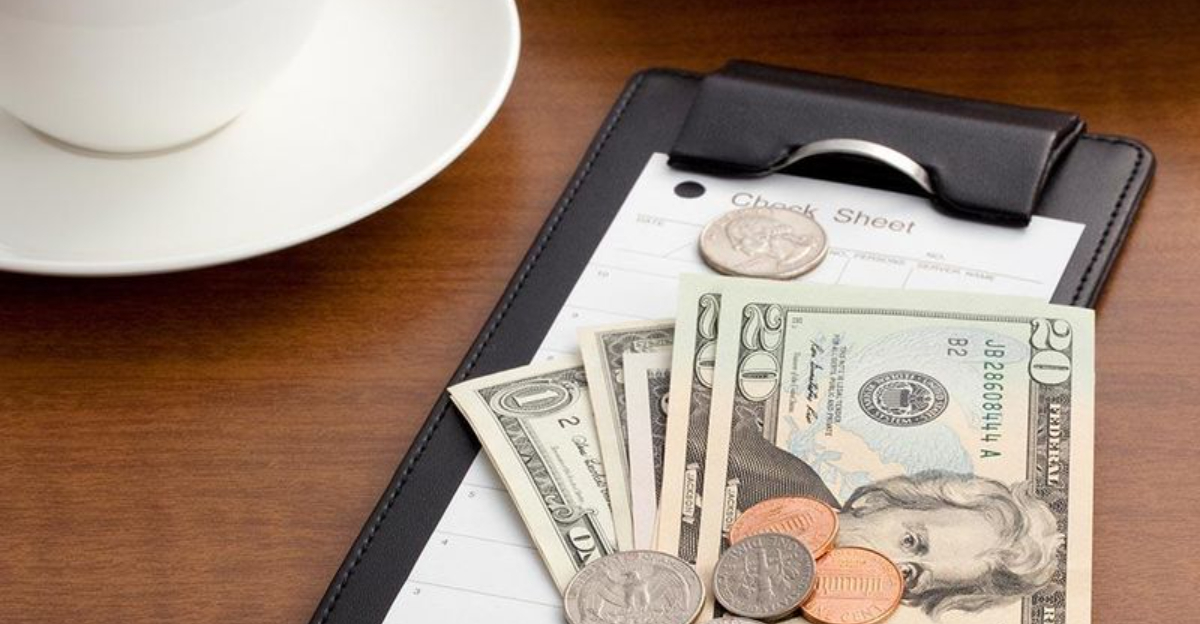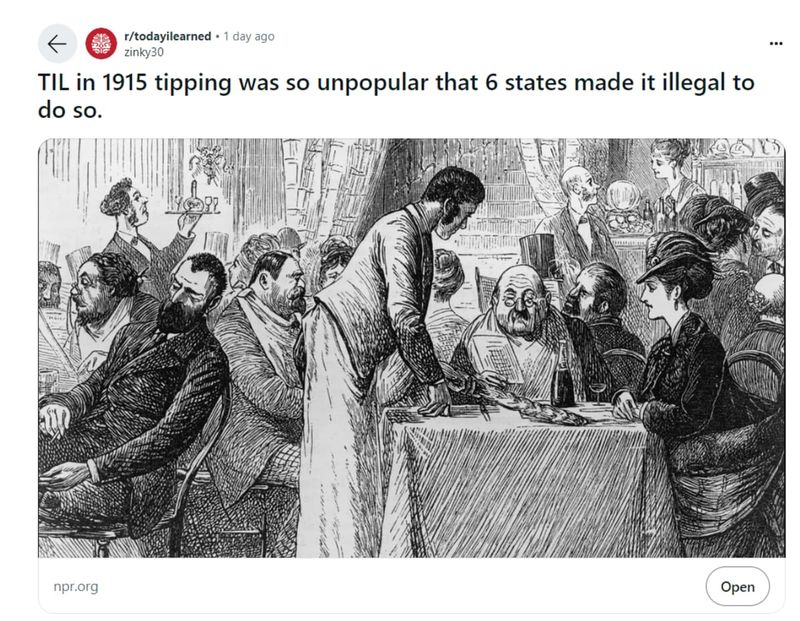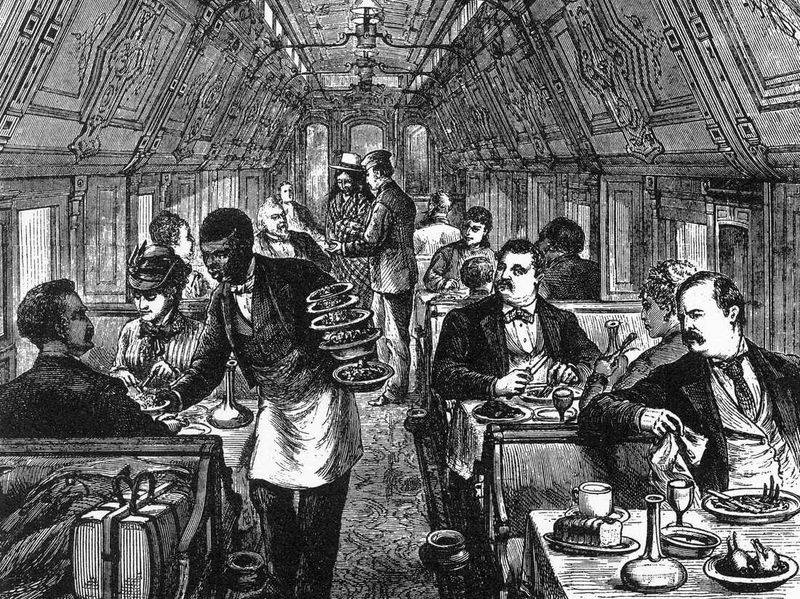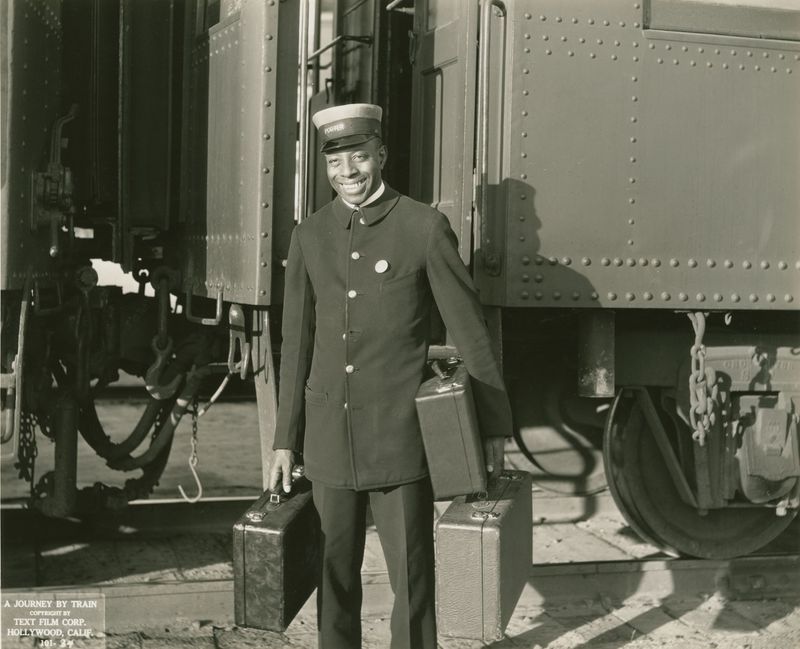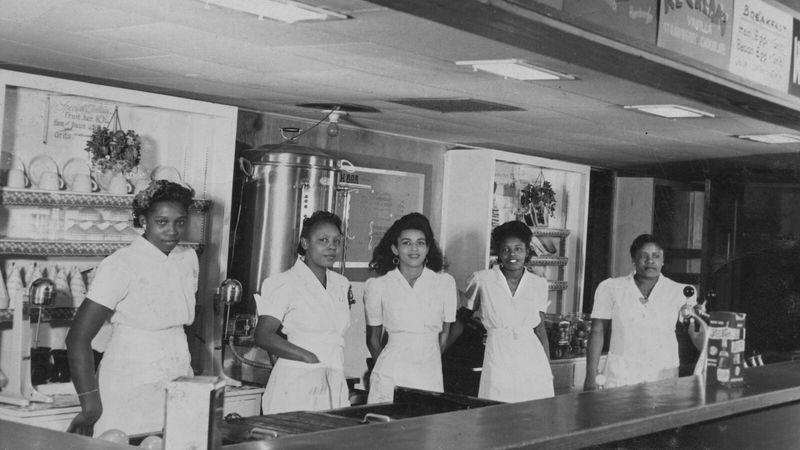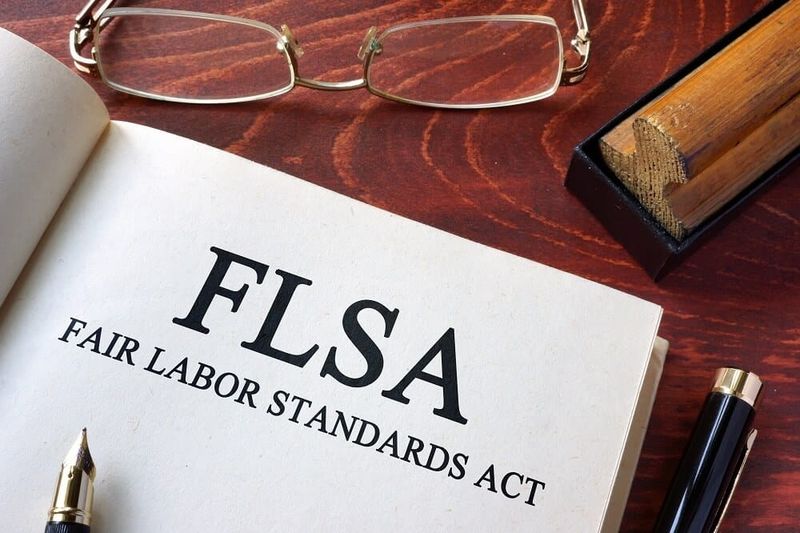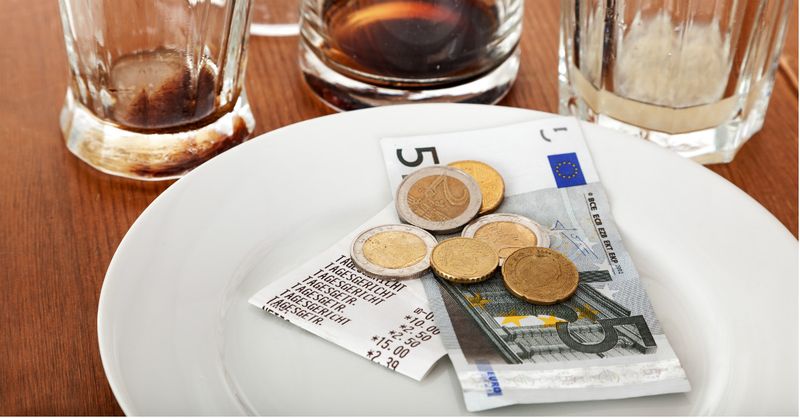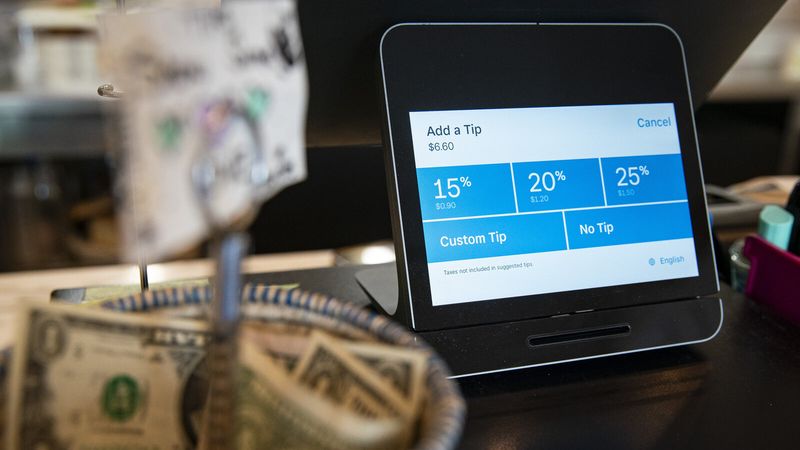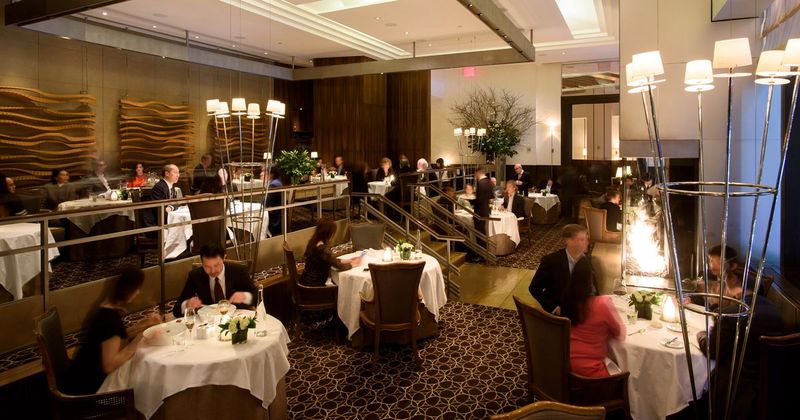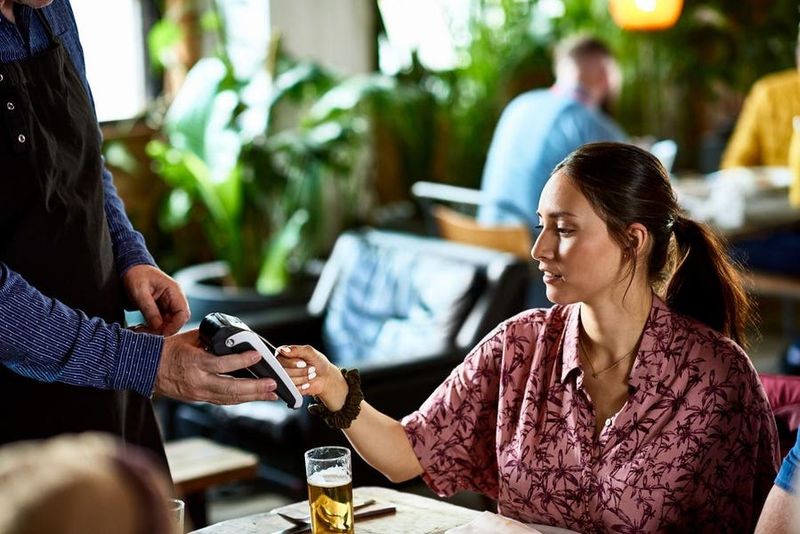Ever left a tip at a restaurant and wondered how this custom began? Tipping has a wild and surprising history in America.
What we consider normal today was once viewed as corrupt, un-American, and even illegal in some states.
The evolution of tipping reveals fascinating insights about American values, class struggles, and economic practices over the past century.
1. Tipping Was Outlawed in Several U.S. States
Believe it or not, leaving a tip could have landed you in legal trouble a century ago! Between 1909 and 1915, states including Washington, Mississippi, Arkansas, Iowa, South Carolina, and Tennessee passed anti-tipping laws.
These states viewed tipping as a corrupt European practice that promoted social inequality. Restaurant owners even formed the Anti-Tipping Society of America in 1905 to fight against what they called a “flunkyism” that degraded workers.
2. Tipping Was Once Considered “Un-American”
Early 20th century Americans weren’t shy about their hatred for tipping. Many newspapers and magazines published fierce editorials condemning the practice as fundamentally un-American and anti-democratic.
Workers’ rights advocates argued tipping created an aristocratic relationship between customer and server. The influential economist William Scott even called tipping “the training school of graft” that undermined American values of equality and independence.
3. Railroads and Hotels Popularized Tipping in the U.S.
Despite public resistance, tipping took hold in America through the luxury travel industry. Wealthy Americans returning from European vacations brought back the tipping habit, which quickly spread through high-end establishments.
Railroad companies, particularly Pullman sleeping cars with their porter service, became infamous for expecting passengers to tip. Hotel magnates like George Boldt of the Waldorf-Astoria embraced tipping as a way to provide personalized service while reducing labor costs.
4. Employers Used Tipping to Avoid Paying Wages
Following the Civil War, a particularly dark chapter in tipping history emerged. Newly freed Black Americans, desperate for work, were hired by restaurants and railroads who paid them nothing.
These employers expected customers to compensate workers through tips. This exploitative system allowed businesses to profit from essentially free labor while reinforcing racial hierarchies.
This practice created a legacy where tipping became associated with servitude and racial inequality that continues to impact America’s service industry today.
5. The Federal Minimum Wage Didn’t Apply to Tipped Workers
When President Roosevelt signed the landmark Fair Labor Standards Act in 1938, establishing America’s first minimum wage, tipped workers were conspicuously left out. This wasn’t an oversight—it was intentional.
The restaurant and hospitality industries successfully lobbied for this exclusion. Their argument? Tips already provided adequate compensation.
This legal loophole formalized the two-tiered wage system we still have today, where restaurants in many states can legally pay servers as little as $2.13 per hour.
6. The “Customary” Tip Has Risen Over Time
Grandparents aren’t exaggerating when they talk about the good old days of 10% tips! Tipping percentages have steadily climbed throughout American history, reflecting changing social expectations.
In the 1950s, etiquette guides suggested 10% as a proper gratuity. By the 1970s and 80s, 15% became the new standard.
Today’s 20-25% expectation represents a significant jump that happened mostly in the last two decades, coinciding with stagnant tipped minimum wages and rising living costs.
7. Tipping Practices Vary Wildly by Region
Step across state lines in America and you might accidentally commit a tipping faux pas! The Northeast, particularly New York City, maintains some of the nation’s highest tipping expectations—often 20% minimum for decent service.
Southern states typically follow more moderate tipping customs. Meanwhile, rural communities might consider 15% perfectly acceptable.
These regional differences reflect local economics, cultural attitudes toward service work, and even historical voting patterns on labor laws.
8. Tip Creep Is Real—Even at Self-Checkout
Remember when only waiters and bartenders expected tips? Those days are long gone! Modern payment tablets now prompt for gratuities at coffee shops, food trucks, retail stores, and sometimes even self-checkout kiosks.
This phenomenon, dubbed “tip creep” by economists, began around 2010 with Square and similar payment systems. Their default tip screens normalized tipping for minimal-service transactions.
Many Americans report feeling pressured when the screen flips around, creating what psychologists call “tip guilt”—a uniquely modern emotional tax.
9. Tipping Isn’t Always Legal or Required
Contrary to popular belief, some American establishments actually forbid tipping! High-end restaurants like Per Se in New York and Alinea in Chicago have experimented with no-tipping policies, building service into their prices.
Federal government employees face strict rules prohibiting them from accepting tips while on duty. Military personnel have similar restrictions.
Several cruise lines and all-inclusive resorts explicitly ban tipping, preferring to pay living wages directly rather than relying on customer generosity.
10. Most Other Countries Don’t Tip Like Americans Do
American tourists often cause confusion abroad with their eager tipping habits! In Japan, leaving extra money might actually offend your server, as it suggests the establishment doesn’t pay proper wages.
European countries typically include service charges automatically or pay living wages that don’t require supplementation. Australia’s robust minimum wage system makes tipping entirely optional and uncommon.
America’s enthusiastic tipping culture stands as a global outlier—a reflection of our unique labor history rather than universal service standards.
